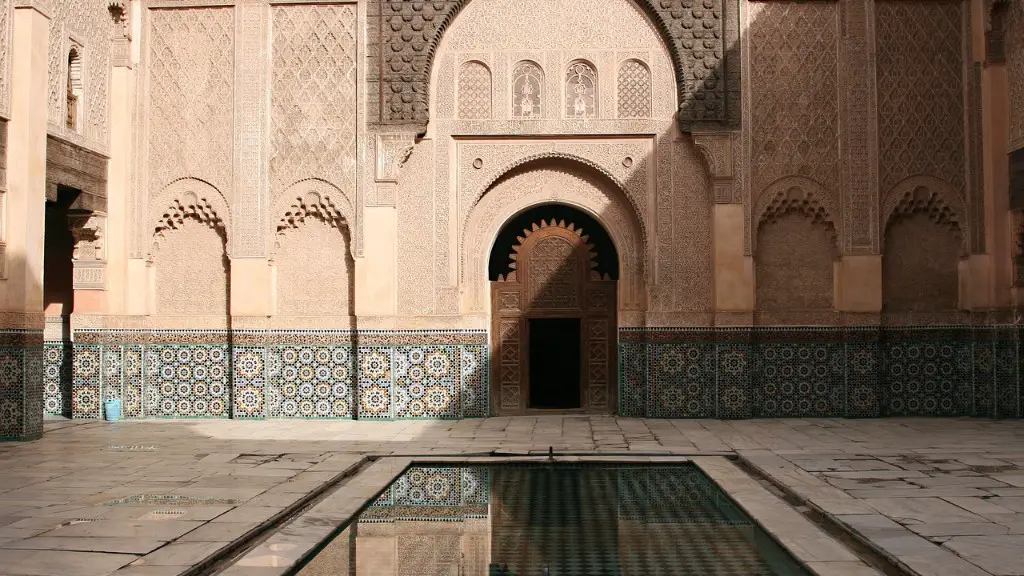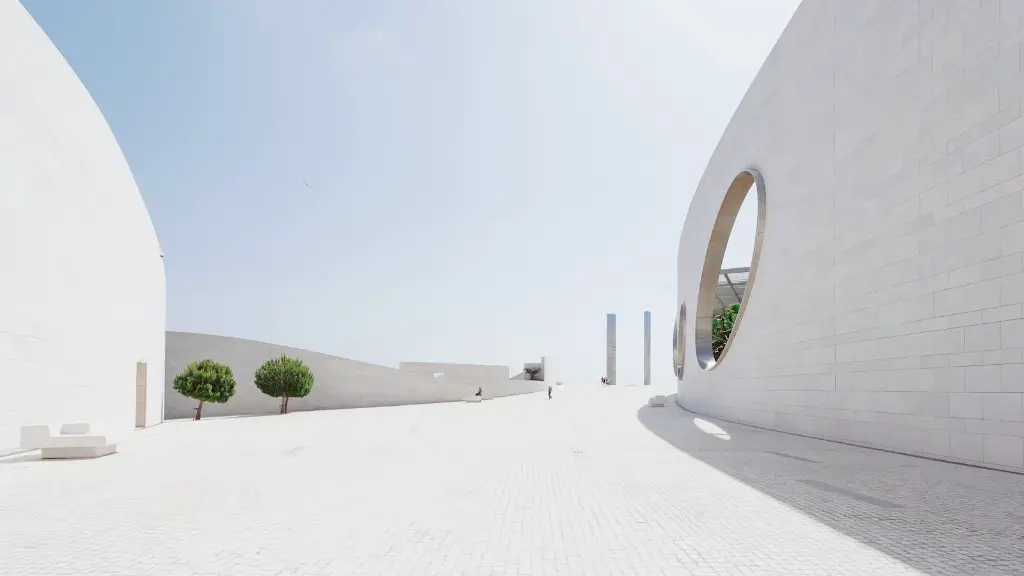Green architecture is a form of construction design that takes the environment, both natural and manmade, into consideration.
It involves the use of sustainable materials and the implementation of other green technologies, such as solar panels, natural ventilation, and green roofs, in the construction of buildings.
This type of architectural design reduces the amount of waste generated, as well as its impact on the environment. It also minimises the building’s need for energy and water, making it more economical and sustainable in the long run.
Green architecture is essentially a combination of traditional principles of design and new, innovative eco-friendly technologies. Designers must consider the building’s orientation, the use of natural ventilation and the location of windows to reduce energy costs. They also have to choose materials that are non-toxic and renewable, such as wood and bamboo, to minimise environmental impact.
Professionals are looking at green architecture as the key to creating an efficient, economical and sustainable future. Architects, engineers and developers are constantly coming up with new ideas and green solutions to make buildings more efficient, like the development of smart homes and the use of renewable energy sources.
The goal of green architecture is to create a balance between built and natural environments, creating a more harmonious relationship between humans, nature and their technological innovations. This approach allows for a reduction in energy usage, which in turn reduces our carbon footprint and contributes to the conservation of natural resources.
Green architecture is an essential piece of the puzzle in the fight against climate change. It is a way to ensure that building and construction projects are sustainable and will benefit both humans and the environment in the long run.
Green Building Materials
The choice of building materials is another critical factor in green architecture. The use of recycled building materials, such as wood and steel, reduces the environmental impact of construction and leads to a more sustainable building.
The use of green building materials is also important for creating a healthier indoor environment. Materials that are non-toxic, such as natural stone, natural paints and recycled materials, are best suited for green architecture.
In addition, the use of renewable energy sources, such as solar, wind and water, for heating, cooling, ventilation and lighting is also an important consideration. This kind of energy is more sustainable and cheaper in the long run, thus reducing the costs of running a building.
In addition to the materials used in construction, the techniques used to build a green building are equally important. Green techniques involve the use of energy efficient methods, such as using passive energy technology, natural ventilation, and geothermal heating.
These techniques help reduce energy costs, as well as the environmental impact of building construction, by using energy and water more efficiently.
Green Building Regulations
The cost of green architecture can be one of the biggest obstacles to its adoption, but it has been argued that the long-term cost savings and the overall environmental benefits of green architecture make it a worthwhile investment.
In recent years, there has been an increase in the number of green building regulations that are being implemented by governments around the world. These regulations incentivise the use of green building practices, making it easier for builders and developers to make the transition to green architecture.
The US Green Building Council has developed the Leadership in Energy and Environmental Design (LEED) certification, which provides specific guidelines for constructing green buildings. The LEED certification has become the standard for green building, and many businesses and developers strive to achieve this certification when constructing new buildings.
Green building regulations have been key to encouraging the adoption of green architecture by builders, businesses and governments, and these regulations have helped to make green architecture a more viable option for developers.
Impacts of Green Architecture
The environmental impact of green architecture is significant. Buildings constructed using this approach are more efficient and use fewer resources, which in turn leads to a lower carbon footprint. The use of sustainable materials also reduces the environmental impacts of building construction, as well as the amount of waste produced.
In addition, green architecture can have a positive effect on the occupants of the building. Buildings constructed with the principles of green architecture are more comfortable, as natural ventilation and other green technologies are used to create a healthier indoor environment.
Green architecture is also becoming increasingly popular with investors, as green buildings often have a higher resale value, making them more attractive investments. Additionally, green buildings often require less maintenance, thus reducing the costs associated with running a building.
Finally, green architecture encourages the use of more sustainable and efficient technologies, which is important for mitigating climate change. By using energy and water more efficiently, green architecture can help preserve natural resources and reduce the environmental impact of our buildings.
Financing Green Architecture
The financing of green architecture projects can be one of the largest obstacles to its adoption. However, there are a number of incentives and grants available to make green architecture more accessible and attractive to investors.
One option is to take advantage of renewable energy incentive programs, which provide financing and grants to help businesses finance green energy systems, such as solar and wind energy. Additionally, there are a number of tax credits, deductions and other financial incentives available for green architecture projects.
Another option is to take advantage of funding from government agencies, such as the US Department of Energy, and private foundations, such as the Environmental Protection Agency. These organizations provide funding for green architecture projects, and they are often willing to help with the financing of green projects.
Finally, many businesses have taken advantage of financing programs tailored specifically for green architecture projects, such as energy performance contracting. These programs provide financing for green projects, and they often provide additional incentives, such as tax breaks, for businesses that undertake green initiatives.
Green Architecture and Sustainable Development Goals
Green architecture is an important part of sustainable development, as buildings constructed using green principles are more efficient and often have a smaller environmental impact. As a result, green architecture is often an important part of a country’s development agenda, as it contributes to achieving sustainable development goals.
Green architecture is included in the United Nations’ 17 Sustainable Development Goals, which include goals related to energy efficiency, waste management and climate action. By implementing green architecture principles in the construction of buildings, countries can make progress towards achieving these goals.
The International Code Council has also developed the International Green Construction Code, which sets standards for green building and provides guidance on how buildings can be constructed using sustainable principles and materials.
Green architecture is an important part of the global effort to reduce the environmental impact of construction and create more efficient buildings. By using the principles of green architecture, countries can move towards achieving their sustainable development goals.
Green Architecture Education
Education plays a vital role in the adoption of green architecture. By educating builders, architects and developers about the benefits of green architecture, more people will be able to make informed decisions about how to construct buildings in a more sustainable manner.
The US Green Building Council offers a LEED certification program for green building professionals. This certification program is designed to equip professionals with the skills and knowledge needed to implement green architecture principles and construct green buildings.
In addition, there are a number of universities offering courses in green building and sustainable design, as well as green materials, technologies and construction techniques. These courses provide students with the skills and knowledge needed to design and construct green buildings.
By providing educational resources and support, we can ensure that more people understand the importance of green architecture and will be able to construct buildings in a more sustainable manner.
Conclusion
Green architecture is an important part of the global push to reduce our environmental impact and create more efficient, sustainable buildings. By taking the environment into account when designing and constructing buildings, we can reduce our carbon footprint and conserve our natural resources.
Green architecture involves the use of sustainable materials and technologies, such as solar and wind energy, as well as the implementation of green building regulations. Additionally, financing programs and educational resources play a key role in encouraging the adoption of green architecture.
The benefits of green architecture are numerous, as efficient buildings require fewer resources and have a smaller environmental impact. By making the transition to green architecture, we can ensure that our buildings are energy efficient and sustainable in the long run.





